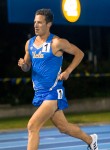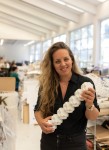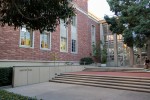A UCLA study found that psychiatric patients respond positively to the therapeutic effects of gardening.
Gardening proved to have significant effects on patients undergoing treatment in a psychiatric setting at UCLA’s Resnick Neuropsychiatric Hospital, according to a study published in fall.
Nancy Wicks, an occupational therapist at Resnick Neuropsychiatric Hospital, said she and other therapists had wanted to try gardening with the patients for a while, but never carried out the idea until patients began to ask for more time outside in satisfaction surveys.
Resnick Neuropsychiatric Hospital employees then decided to allow patients in the psychiatric unit to garden empty planters.
Huibrie Pieters, associate professor at the UCLA School of Nursing, said researchers developed the idea for the study after they noticed patients reacting positively to gardening, which is unusual because researchers typically put ideas into practice after conducting research first.
Leilanie Ayala, nursing educator at Resnick Neuropsychiatric Hospital, said most of the prior research into the therapeutic benefits of gardening was conducted outside hospitals.
“A lot of the gardening activities were done in an outpatient setting or community mental health setting,” Ayala said. “It was also done among geriatric populations, but there was no research done for inpatient adult psychiatry.”
The study ran from July 2017 to February 2018. Researchers at Resnick secured funding from the hospital to start a garden in empty planter beds. They then had 25 patients garden alongside the staff once a week. Afterward, the research team interviewed patients to analyze how the activity impacted their mental health.
The research found gardening and connecting with nature enabled patients to take their minds off medical treatment, Ayala said.
“(Patients said gardening) made them feel productive,” Ayala said. “They were able to reflect about their own lives as they were gardening.”
The favorable outcomes and clinical implications of the study have significantly built on previous knowledge on gardening therapy. The study has also received three abstracts at conferences, Pieters said.
“The data is going to be disseminated in psychiatric nursing and in occupational therapy, and to social work conferences,” Pieters said.
Ayala said UCLA Health aims to involve all units at Resnick Neuropsychiatric Hospital in gardening. She added the research team also hopes to spread awareness about its findings so hospitals everywhere can implement similar gardening programs.
Wicks said although the study has concluded, the original group of patients is still gardening.
“We’re trying to apply the knowledge that we got from the research to the group that we run each week so that really makes it evidence-based,” Wicks said. “That’s really the standard of care that you should be doing in any clinical intervention.”






